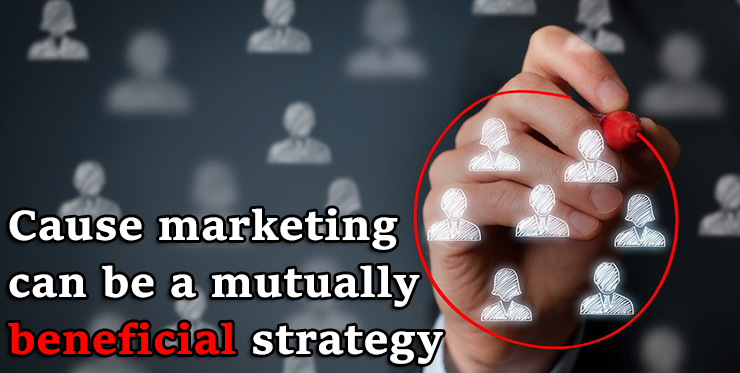Cause marketing can be a mutually beneficial strategy

People are more likely to support brands that share their values, so cause marketing can help the world and the brand’s bottom line – as long as it’s done right.
Can online ads do good? Thanks to a mobile app, the answer is yes. Consumers in San Francisco can now give $1 to the Boys & Girls Clubs of San Francisco every day without having to spend their own money. All they have to do is watch a five-second ad on their phones.
The concept was created by Paris-based Tinbox, which is inviting businesses to sponsor donations to non-profits in exchange for positive brand association.
Facilitating the donations to the Boys & Girls Clubs of San Francisco is Charles Schwab & Co., which has agreed to give $50,000. In the past, Tinbox has also partnered with German software company SAP.
Welcome to the world of cause marketing, where companies align themselves with charities to give back to their communities while also improving their brand image. Tinbox is giving businesses a unique opportunity to increase their exposure for a good cause. But cause marketing can take many forms, from YouTube videos to social media campaigns.
Last month, General Mills-owned Cheerios and Quebec-based agency Cossette made the iconic Honey Nut Cheerios bee “Buzz” disappear to raise awareness for declining bee populations. The campaign includes a microsite, TV spot, contest, online video, and the use of the #BringBackTheBees hashtag.
“With ongoing losses in bee populations being reported across Canada, we wanted to use our packaging to draw attention to this important cause,” says Emma Eriksson, director of marketing for General Mills Canada.
General Mills shares many cause marketing stories on the Responsibility section on its site. There, consumers can learn about the company’s commitment to sustainable agriculture, work with Outnumber Hunger and Feeding America, and dedication to revitalizing the Minneapolis stretch of the Mississippi River where General Mills was born. Each article highlights the company’s efforts to do social good.
If it seems to you that cause marketing has really swelled in recent years, you’re right. North American spending on sponsorships of causes reached about $1.92 billion last year, up from $1.78 billion in 2013. Aside from the obvious benefits of improving our society and helping those in need, every sponsorship represents an opportunity for companies to promote their good deed.
The potential payoff of doing so is big. For years, studies have shown that consumers are more likely to buy from brands that support a cause they believe in.
According to the 2016 Edelman Trust Barometer, 80 percent of consumers believe companies should be able to improve economic and social conditions in their communities while increasing their profits. Ninety-percent of Americans are more likely to trust a brand that gives back, while 84 percent would spread the word about a company’s corporate social responsibility (CSR) campaign.
“There’s definitely been an uptick in consumer interest in socially responsible companies,” says Adrien Guilmineau, co-founder and chief executive (CEO) of Tinbox. “Consumers today demand to deal with companies that are socially responsible and that they trust. As a result, companies must alter the way they advertise so consumers know they share these same values.”
Guilmineau and her business partner created Tinbox after they realized how much work companies were putting into CSR.
“We were astounded,” he says, adding that many consumers weren’t aware of the projects businesses were pledging to support. “We realized that having companies team up with consumers to support social causes in their community would be really engaging way to get this across.”
Another way that brands are educating consumers about the causes they support is through blog posts. Snack brand KIND takes its name seriously by supporting organizations and events like Rescuing Leftover Cuisine and World Kindness Day. It uses its blog to let consumers know what it’s up to, and also launched a web-based program designed both to encourage acts of kindness and distribute product samples.
Personal care product company Burt’s Bees recently removed the b’s from its logo, web site, and social media accounts to raise awareness for declining bee populations and its non-profit company. Like Cheerios, it’s using the #BringBackTheBees hashtag.
Other than using owned media and partnering with a company like Tinbox, what can you do up your cause marketing game?
Choose a cause that reflects your brand’s values and philosophy, promote your involvement to raise awareness for the non-profit you’ve partnered with, and create opportunities for your customers to get involved in the donation process. When cause marketing is done with sincerity and good intentions, it’s a universal win.
___
by Tessa Wegert

